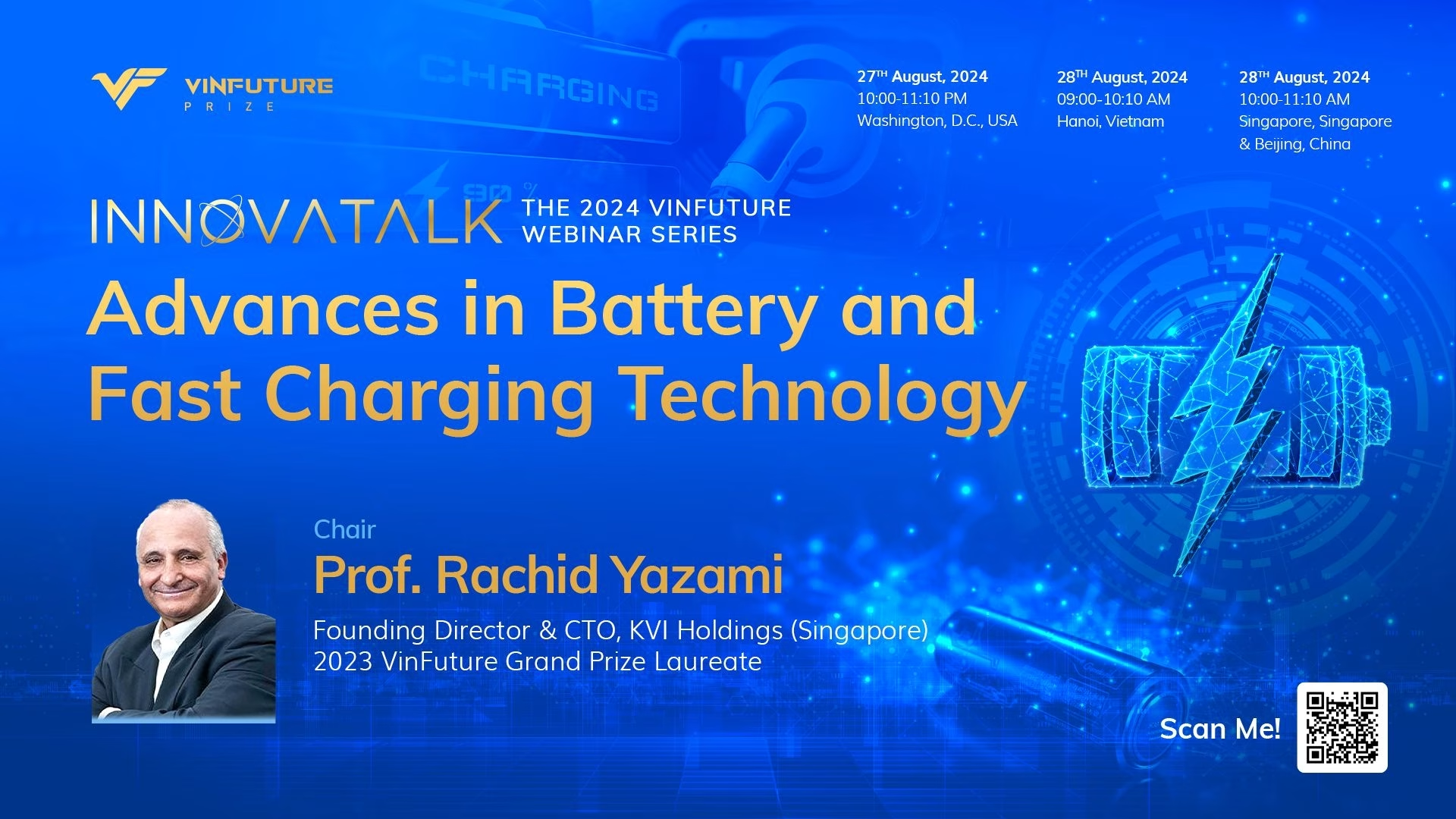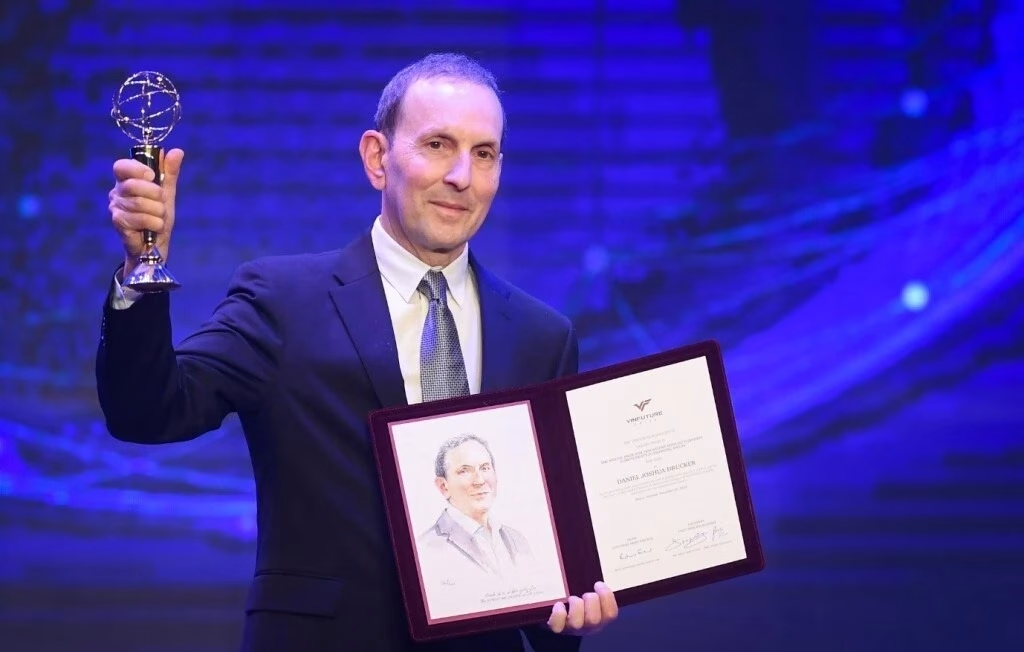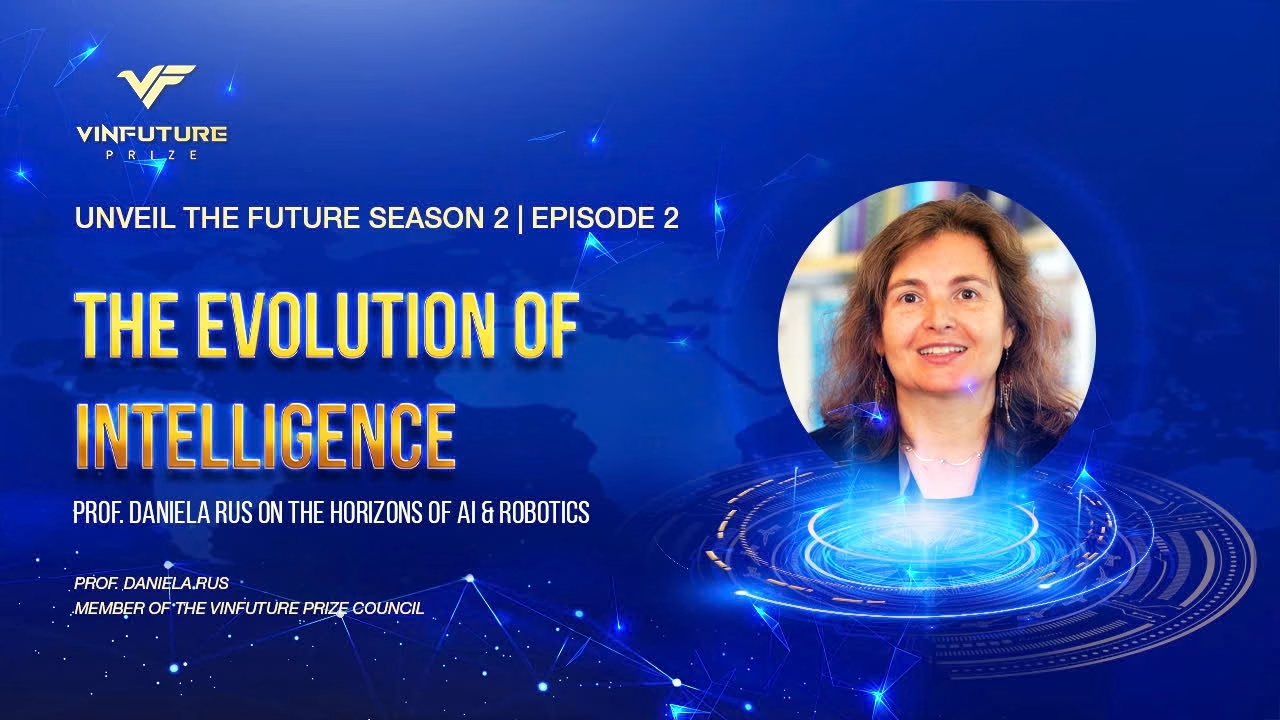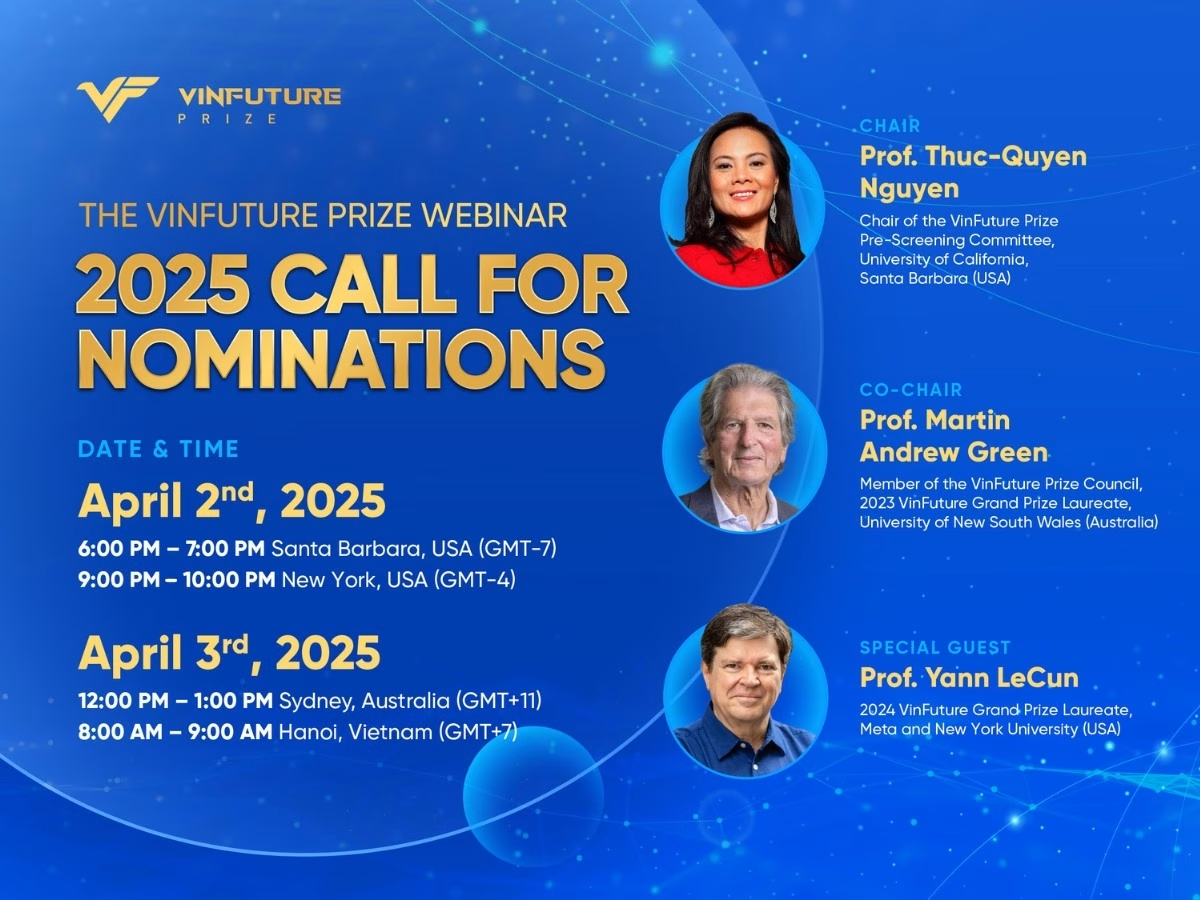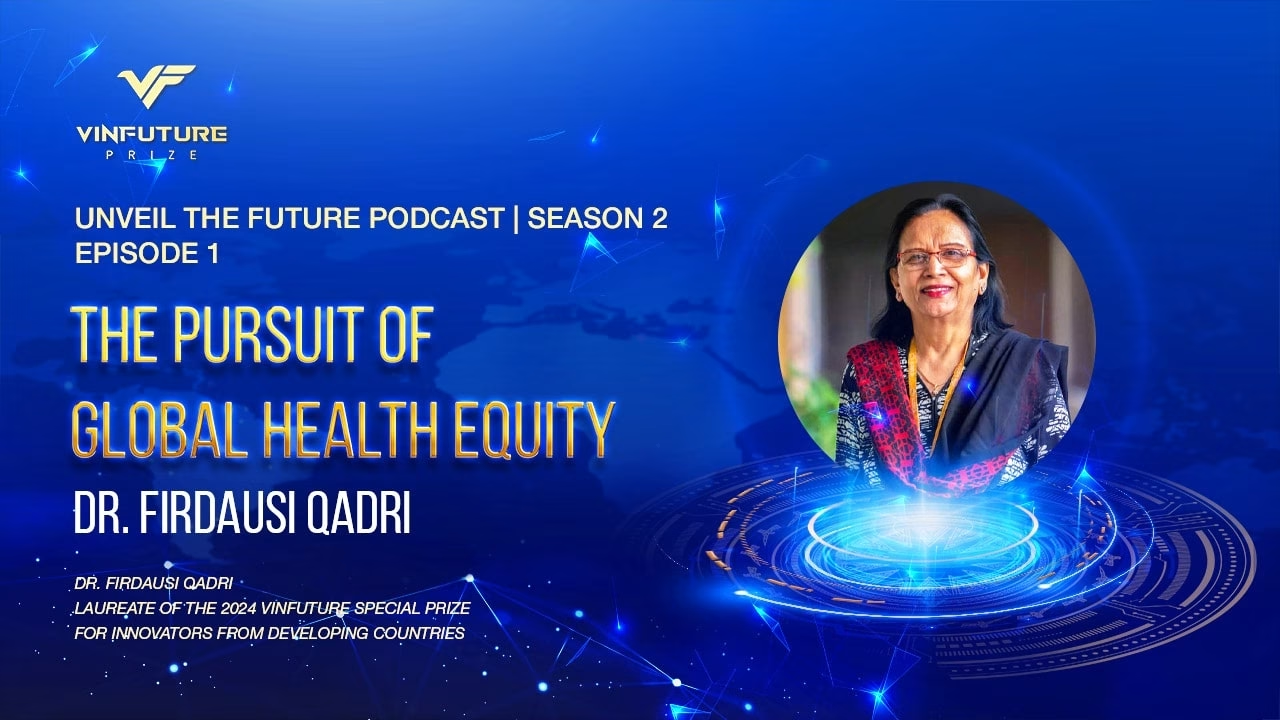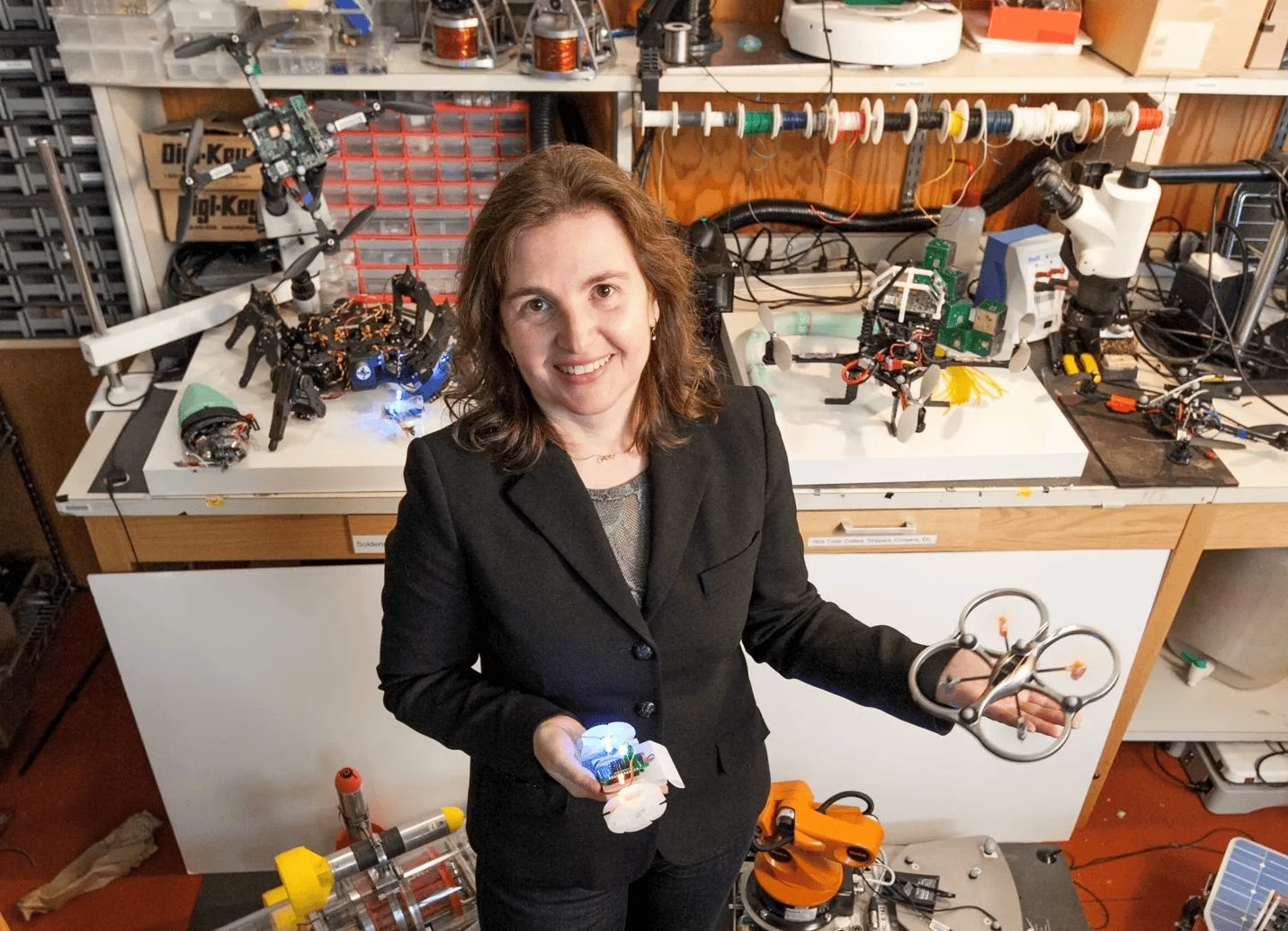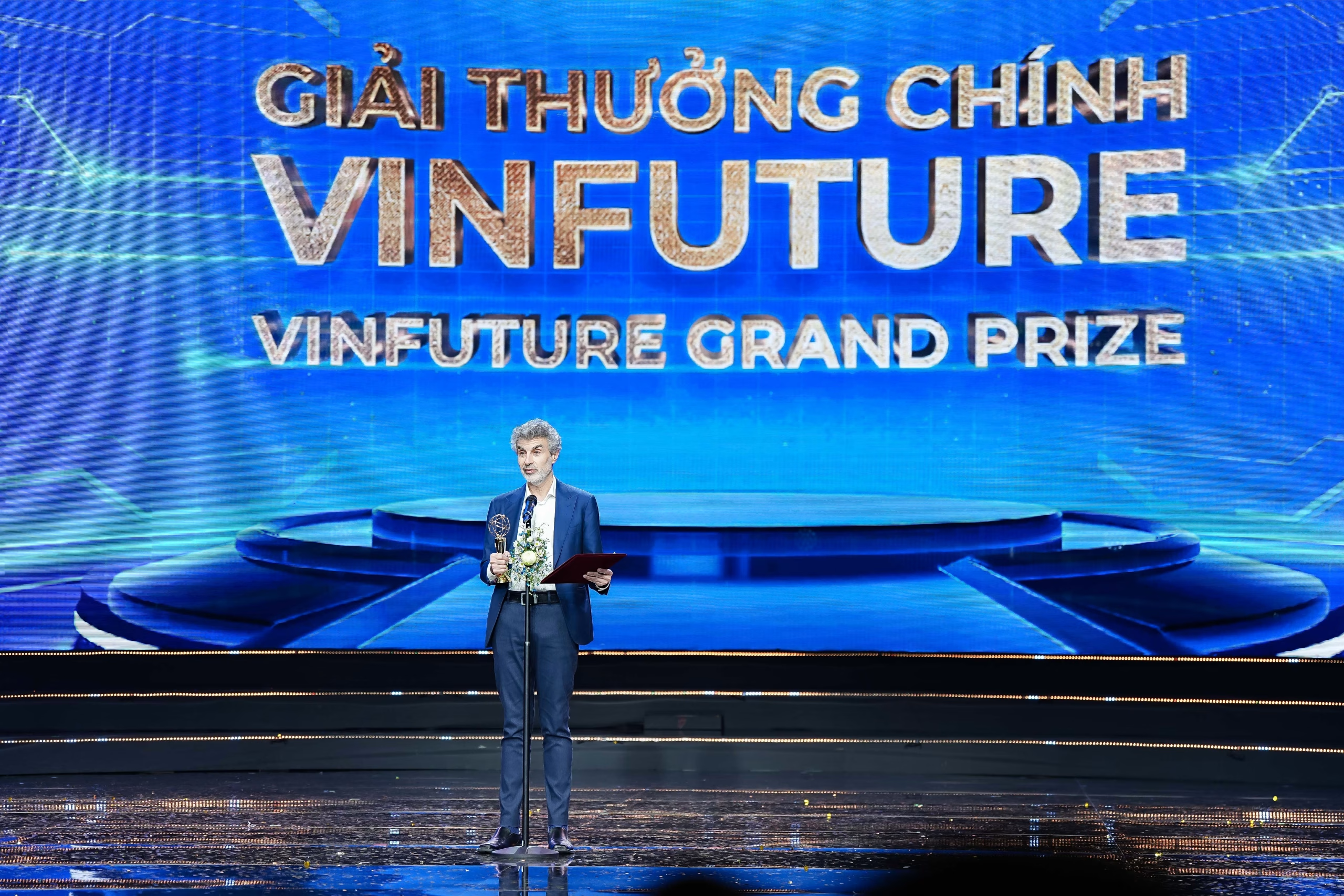Renowned battery expert and 2023 VinFuture Grand Prize Laureate, Prof. Rachid Yazami, will lead the discussion at the upcoming InnovaTalk webinar.
As the Founding Director and CTO of KVI Holdings, Prof. Yazami has been a driving force in battery technology innovation for decades. He pioneered the exploration of reversible electrochemical intercalation of Lithium-ions into graphite, laying the foundation for the development of modern Lithium-ion batteries.
Moreover, his work also has brought extensive insights into the thermodynamics of battery charging and discharging processes, which was described in the fundamental Yazami’s Battery Theorem. Until today, he remains at the forefront of innovation, continuing his exploration into novel cathode, anode materials, and the fundamental processes of battery operation.
Prof. Yazami holds an impressive portfolio of more than 70 patents related to battery technology, showcasing his inventive spirit and commitment to pushing the boundaries. Additionally, he has co-authored more than 250 papers on batteries, their materials and systems, solidifying his position as a leading authority in the field. His groundbreaking work has earned him recognition from prestigious organizations worldwide, including NASA, NATO, IBA and IEEE.
MC: In an era of constant connectivity and mobility, batteries and fast charging have become essential. How have these advancements fundamentally reshaped our daily lives?
Professor Yazami: Fast charging became crucial when the industry shifted its focus to electric vehicles. For widespread adoption of electric vehicles, we need to achieve fast charging in about 10 minutes and a driving range of around 800 kilometers, comparable to gasoline-powered cars. However, this is currently nearly impossible. Fast charging remains a bottleneck in the development of electric vehicles, leading to extensive research on reducing charging times.
In Singapore, we have set a world record by charging certain types of batteries in 6 minutes. However, typical electric vehicle batteries are larger and require more time. Currently, we can charge a battery from 10-15% to 85-90% in less than 15 minutes.
MC: Given the increasing demand for longer-lasting and more efficient devices, what groundbreaking battery advancements do you foresee that will redefine the possibilities of power?
Fast charging necessitates high-power charging systems. For instance, charging a 100 kilowatt-hour Tesla car battery in 6 minutes requires a 1-megawatt charger. Current chargers have lower power capacities. While the hardware for high-power chargers exists, using them with conventional charging methods leads to battery overheating due to internal resistance.
The key lies in finding alternative charging technologies to replace the existing constant current (CC) or constant current constant voltage (CCCV) methods. One such alternative is non-linear voltammetry (NLV), which enables faster charging without overheating the battery. NLV allows most electric car batteries to be charged from 15-20% to 80-90% within 10-15 minutes.
MC: How do you anticipate the knowledge and insights shared in this webinar will empower attendees to harness the full potential of battery and fast-charging technology in their respective fields?
Professor Yazami: First, the materials used within the battery – the chemistry, anode, cathode, and electrolyte composition. These can be optimized for faster charging. The conference will likely feature papers on new materials, especially oxides (NCM) and lithium iron phosphate, which dominate the cathode material market. Formulations and chemistry can remain similar, but particle size, surface area, and electrolyte conductivity can be adjusted. These are areas of intense research, aiming to maintain high energy density while enabling fast charging.
Another aspect is the charging method itself. We might see improvements in CC-based methods or entirely new technologies. The impact of charging technology on battery life is crucial – we want batteries to last at least 10 years. Can specific charging technologies achieve this? Safety is paramount; we want to avoid thermal runaway, fires, or explosions during charging.
Finally, cost is a factor. Modifying battery composition with nanostructured materials increases costs. The battery pack is a significant portion of the car’s cost, so we need affordable yet high-performing batteries.
